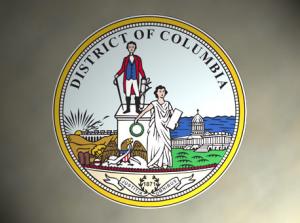D.C. Orders LDC to Develop Program and Provide Cost Estimate

The District of Columbia Public Service Commission has directed a natural gas local distribution company (LDC) to craft a "self-contained" purchase-of-receivables (POR) program for alternative natural gas suppliers and their customers. After considering party testimony, the commission deemed it advisable to require the LDC, Washington Gas Light Company (WGL), to design a POR plan. The commission also gave the company guidance on setting an appropriate discount rate to apply in calculating the price it would pay to acquire past-due accounts of competitive suppliers.
The commission noted that the company had previously instituted a POR program in Maryland, where it also operates as an LDC. In finding that WGL should pursue POR opportunities, the commission cited the successful results of an electric POR plan which it credited with aiding development of a competitive market for electricity following implementation of the POR program by Potomac Electric Power Company (Pepco).
In tasking the LDC with development of a POR program, the commission told the company that it must submit a detailed estimate of expected program costs as well as an implementation timeline. However, the commission denied a request from the D.C. Office of the People's Counsel that it require WGL to also file all reports associated with its POR program in Maryland.
Moreover, in light of numerous customer complaints associated with WGL's electronic billing and payment system, the commission instructed the LDC to demonstrate that such complaints continue to trend downward. The commission stressed that such a showing is a condition precedent to actual commencement of a POR plan.
In analyzing the need for a POR program, the commission explained that proponents (i.e., competitive retail suppliers) had asserted that such a program would, among other things, allow customers to switch natural gas suppliers more easily and provide alternative suppliers with a better opportunity to receive partial payments through consolidated bills administered and collected by the LDC, thereby improving competition. On the other hand, the commission said, opponents of POR initiatives had claimed that such programs produce a disincentive to suppliers to conduct prudent credit checks of potential customers. Plus, they alleged that the plans could prove burdensome to utilities and result in unnecessary costs being passed through to customers.
The commission observed that WGL was not among the parties challenging a POR program for competitive natural gas suppliers in the District. At the same time, though, the commission reported that WGL had stated that it has not yet been demonstrated that such a POR offering will enhance the retail natural gas market in the same way it did Pepco's electric market.
The commission concluded that taking all factors into account, a POR program more likely than not would provide a boost to retail natural gas supply competition in the District. Referencing Maryland's experience, the commission commented that regulatory authorities there had relied on a similar rationale for establishing POR programs for both electricity and natural gas supply markets. According to data from the Maryland plans, the District commission found a definitive link between the availability of POR plans and increased supplier participation in Maryland's electric choice program.
The commission remarked that the District had seen an analogous trend in its own electric market, as the number of competitive electric suppliers rose between calendar years 2012 and 2015 after implementation of Pepco's POR protocol. The commission determined that implementation of a POR program by WGL would probably produce a similar result and would do so without materially impacting the LDC's firm delivery service customers.
A major issue in the proceeding involved the establishment of an appropriate discount rate to be applied in pricing the bad debt accounts being acquired by WGL. The commission expounded that POR programs work by permitting utilities to purchase the receivables of retail electricity or natural gas suppliers at less than the face value of the outstanding account, with that discount at a minimum being equal to the utility's actual uncollectibles rate - i.e., bad debt rate.
The commission related that the rate to be paid by the utility for the past-due accounts is important because under POR programs, the risk for collecting unpaid debt is shifted from suppliers to the utility. Given the need for careful analysis when setting the discount, the commission identified the following seven items that should be included when calculating the discount rate:
- Bad debt expense
- Implementation costs
- Incremental collection costs
- Cash working capital needs
- Risk factors
- Reconciliation factors
- Late payment revenues
Washington Gas had proposed exclusion of the late payment fee component, arguing that recognition of the fees in discount rate computations would benefit competitive suppliers to the detriment of distribution service customers. In rejecting that suggestion, the commission ruled that the company's POR program should be structured in such a way as to assure that only late payment fees collected from competitive supplier customers would be included in the discount rate calculation.
Thus, the commission said, the company's POR plan should operate as a "self-contained" one that does not factor in any charges assessed by the LDC for unpaid distribution service of its own customers. Re Establishment of a Purchase of Receivables Program for Natural Gas Suppliers and Their Customers in the District of Columbia, Formal Case No. 1140, Order No. 18798, June 15, 2017 (D.C.P.S.C.).



